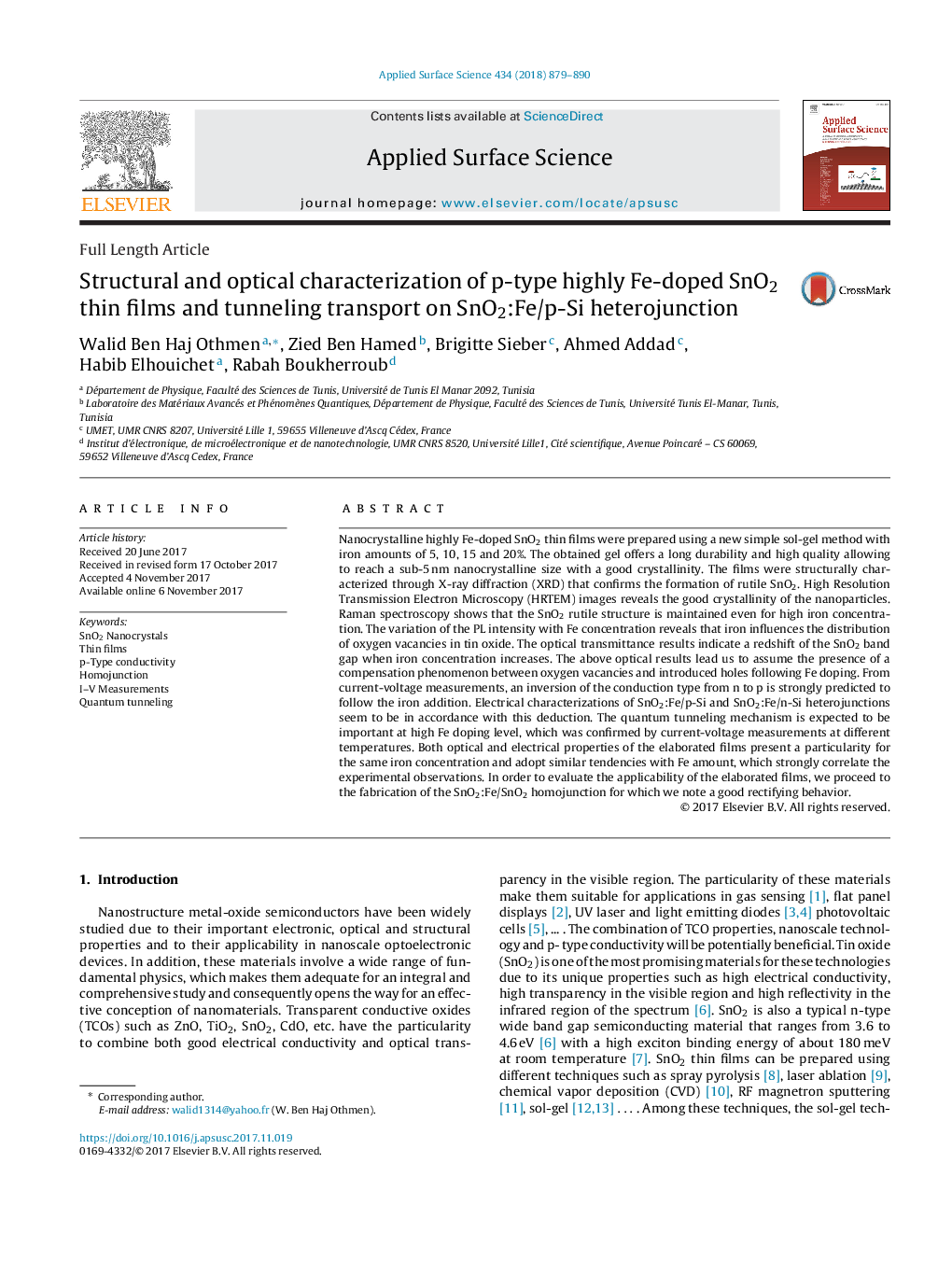| Article ID | Journal | Published Year | Pages | File Type |
|---|---|---|---|---|
| 7836541 | Applied Surface Science | 2018 | 12 Pages |
Abstract
Nanocrystalline highly Fe-doped SnO2 thin films were prepared using a new simple sol-gel method with iron amounts of 5, 10, 15 and 20%. The obtained gel offers a long durability and high quality allowing to reach a sub-5ânm nanocrystalline size with a good crystallinity. The films were structurally characterized through X-ray diffraction (XRD) that confirms the formation of rutile SnO2. High Resolution Transmission Electron Microscopy (HRTEM) images reveals the good crystallinity of the nanoparticles. Raman spectroscopy shows that the SnO2 rutile structure is maintained even for high iron concentration. The variation of the PL intensity with Fe concentration reveals that iron influences the distribution of oxygen vacancies in tin oxide. The optical transmittance results indicate a redshift of the SnO2 band gap when iron concentration increases. The above optical results lead us to assume the presence of a compensation phenomenon between oxygen vacancies and introduced holes following Fe doping. From current-voltage measurements, an inversion of the conduction type from n to p is strongly predicted to follow the iron addition. Electrical characterizations of SnO2:Fe/p-Si and SnO2:Fe/n-Si heterojunctions seem to be in accordance with this deduction. The quantum tunneling mechanism is expected to be important at high Fe doping level, which was confirmed by current-voltage measurements at different temperatures. Both optical and electrical properties of the elaborated films present a particularity for the same iron concentration and adopt similar tendencies with Fe amount, which strongly correlate the experimental observations. In order to evaluate the applicability of the elaborated films, we proceed to the fabrication of the SnO2:Fe/SnO2 homojunction for which we note a good rectifying behavior.
Keywords
Related Topics
Physical Sciences and Engineering
Chemistry
Physical and Theoretical Chemistry
Authors
Walid Ben Haj Othmen, Zied Ben Hamed, Brigitte Sieber, Ahmed Addad, Habib Elhouichet, Rabah Boukherroub,
